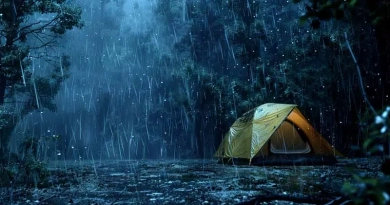
How Do I Read a River for Kayaking?
It’s a question I’ve grappled with time and again: “How do I read a river for kayaking?” Whether you’re planning a leisurely paddle or navigating rapids, interpreting the river’s language is essential for safety and enjoyment.
As the river winds beneath the early morning mist, a path laden with both beauty and challenges unfolds before my kayak. The skill of reading a river—understanding its whispers and roars—stands as one of the most crucial for any kayaker.
Reading a river effectively requires recognizing various visual cues and understanding the hydrodynamics at play:
- Water Flow and Features: Identifying how the water moves around obstacles like rocks or through narrows can indicate potential hazards or safe paths.
- River Hazards: Recognizing hazards such as strainers, weirs, and low-head dams is vital for planning a safe route.
- Water Levels and Speed: Changes in water levels and flow speed can dramatically affect kayaking conditions.
- Weather Impact: Weather conditions can affect river levels and flow patterns, presenting additional challenges.
These factors create a complex puzzle that kayakers must solve to safely enjoy their journey.
Implementing the Best Solutions
The art of reading a river is learned through both education and experience. Here’s how to develop this critical skill:
- Learn the Basics of Hydrology: Understand basic river features such as eddies, riffles, and currents. Knowing what these features look like and how they function can help you predict water behavior and find the safest routes.
- Observe and Plan: Spend time observing the river from the shore before launching. Look for visual cues like water color changes, surface texture, and movements. Plan your route by identifying safe passages and potential rest spots.
- Use River Maps and Guides: Familiarize yourself with the river’s layout beforehand through maps and navigational guides. These can provide crucial information about known hazards and water conditions.
- Practice in Safe Conditions: Gain experience by practicing in less challenging waters. As you become more comfortable, gradually increase the difficulty of the rivers you kayak to improve your reading skills.
- Take a Course or Join a Group: Learn from experienced kayakers through courses or group outings. Experienced guides can provide insights and real-time explanations of river reading techniques.
Essential Resources and Tools
To effectively read a river for kayaking, consider the following resources and tools:
- Detailed River Guides and Maps: Essential for pre-trip planning and navigation.
- Waterproof Notebooks and Pens: Useful for noting observations and route planning on the go.
- Apps and Websites for River Conditions: Check real-time water levels and flow rates.
- Safety Gear: Always wear a helmet and life vest, and carry emergency communication devices.
Conclusion
Reading a river is not just about seeing; it’s about understanding and interacting with the water in its most natural form. This skill transforms kayaking from a mere activity to a dialogue with nature. Each river tells a story, and learning to read that story is crucial for anyone who chooses to navigate its courses. As the river flows onward, so too does the knowledge of each kayaker who learns to read its signs and signals. With practice, patience, and the right resources, the ability to read a river enriches the kayaking experience, weaving it into the fabric of unforgettable adventures.






